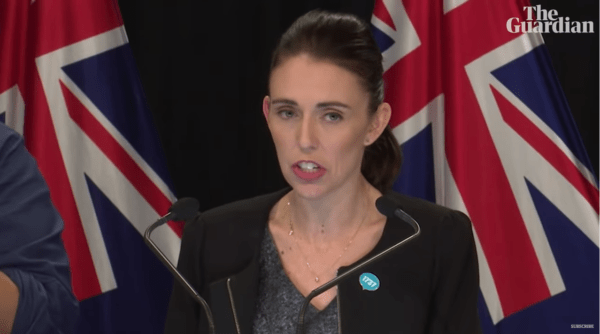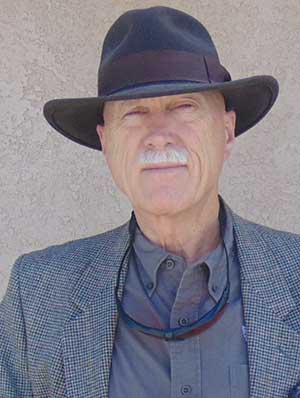
New Zealand -(Ammoland.com)- New Zealand attempted controls on firearms ownership from 1845 to 1885. It was not very effective. From 1885 to 1912, the arms control law was generally a dead letter. From 1912 to 1945 arms control was again attempted, primarily as a means of preventing revolution. From 1945 to 1965, there was again a peaceful enjoyment of firearms with few controls in New Zealand. There were registration controls on the books, but they proved ineffective. Because of increasing crime rates, from the middle 1960’s to 1983, the New Zealand police struggled with the ineffective registration system. The information was obtained from the 1997 study of its gun control history.
The study found that seminal work done by Inspector Colin Greenwood in the first-ever academic study of the effect of gun control in England and Wales, published by Cambridge University, was well received in New Zealand in 1982.
New Zealand abandoned firearms registration for most guns in 1983, after police found gun registration was expensive to administer and ineffective in solving crimes. From wikipedia:
An internal police report in 1982 criticised the proposals, saying there was no evidence that registration of guns helped to solve crimes, and that registration would use time and money better spent on other police work. This policy was adopted by the government in the 1983 Act.
A summation of the 1982 report can be found at rkba.org.
In 1988 Josh Sugarman of the Violence Policy Center advocated pushing for gun control of semi-automatic rifles, as the push for control of handguns had stalled. Thus Sugarman laid out a basic strategy for demonizing semi-automatic rifles and working to have them banned or restricted. From reason.com:
Josh Sugarmann, founder and executive director of the Violence Policy Center, laid out this strategy of misdirection and obfuscation in a 1988 report on “Assault Weapons and Accessories in America.” Sugarmann observed that “the weapons’ menacing looks, coupled with the public’s confusion over fully automatic machine guns versus semi-automatic assault weapons—anything that looks like a machine gun is assumed to be a machine gun—can only increase the chance of public support for restrictions on these weapons.”
The mass media, especially in America and the Anglosphere, has had an especially close connection with the anti-gun lobby since the 1960s. The media brazenly pushed for bans on “Assault Weapons”.
The first mass killing with an AK47 clone was done in Stockton, California, in January of 1989. Patrick Purdy killed 5 schoolchildren and wounded 32 others. A spate of mass killings by shooting followed the media blitz.
In New Zealand, there were four mass killings, although only one involved an AK47 clone.
The first mass killing was in 1990, the Aramoana massacre in which 13 people were killed on 13-14 November. An AK47 semi-auto clone and some .22 semi-autos were used by a registered gun owner.
A second mass killing occurred on 20 May 1992 at Paerata, where 6 victims were killed with a double-barreled shotgun. The killer held a firearms license.
A change in the 1983 Act occurred in 1992, the Aramoana killings were used to promote and justify it. Considerable regulation of semi-automatic rifles was included, mostly based on irrational cosmetic features, such as the strict regulation of rifles that had bayonet lugs, folding stocks, pistol grips, or flash suppressors. In the United States, a ban on the sale of “assault weapons” was enacted from 1994 to 2004. Both bans were ineffective.
A third domestic mass killing occurred on 20 June 1994, using a .22 rimfire semi-automatic rifle. The killer held a firearms license.
A fourth mass killing of a father and four guests occurred at Raurimu on 8 February 1997, using a single shot shotgun. The killer’s license had been revoked.
In 2019, after 29 years without a mass killing involving a “military-style” semi-automatic rifle, but including one with a .22 rimfire and one with a single shot shotgun, a political terrorist targeted a militant Islamic Mosque. He murdered 51 people. The far-left government immediately launched an extreme program to ban most centerfire semi-automatics. The law was passed nearly unanimously, with very little dissent shown or allowed.
The murderer’s manifesto, showing his political reasons for the attack (including radical environmentalism, desire for more governmental authority, and a philosophical admiration for the Chinese Communist-style of government) was banned by the New Zealand censorship authority. The murderer predicted the imposition of harsh gun control and stated the gun community in New Zealand deserved it for being insufficiently radical. He stated one of his objectives was to promote harsh gun restrictions in the United States of America. Twitter banned John Lott for tweeting this fact.
The media in the Anglosphere applauded and promoted the New Zealand government actions. While a petition approving of radical legislation gathered 70,000 signatures in a week, a countervailing petition from the New Zealand gun culture was repeatedly taken offline. New Zealand has demonstrated that freedom of speech and the press are necessary to maintain the right to arms.
New Zealand does not have a Bill of Rights.
The legislation was poorly thought out and contained numerous flaws. This is not unexpected, as it was drafted and promoted by people who know very little about firearms and firearms technology.
Opposition to the law started to grow in spite of the push by the media and politicians to pass the restrictive controls before the emotional response died down. The response by the gun culture in New Zealand has been to moderate the legislation. They wish to make it conform to the rule of law, and to centuries-old systems of fair treatment. They demand that the confiscated property be paid for at market value.
There is no registration of rifles or shotguns in New Zealand, because the police found, over long experience, that registration was costly and ineffective in solving or stopping crimes. That experience was repeated in Canada, where the Canadian registration system for most long guns was repealed after it proved to be extremely costly and ineffective in solving crimes. New Zealand is facing problems in confiscating guns that are not on a registry. From inhomelandsecurity.com:
The government, meanwhile, is faced with a sobering set of challenges over how to enforce the new law.
There is no national registry for many of the weapons targeted by the ban, including the AR-15 — a semiautomatic rifle that has been used in mass shootings in the United States and is often at the center of American gun-control debates.
New Zealand is demonstrating exactly what American Second Amendment supporters have stated for many years. It is difficult to have confiscation of guns when the government does not know who has what guns.
A new New Zealand group that is pushing for civilian disarmament, seeks to create a national registry. The group claims to be “non-partisan”, although all three members are on the far left. They are Philippa Yasbek, Hera Cook, and Nik Green.
The registry would have an automatic expiration date of three years, presumably to enable a gradual confiscation of guns by slowly making more and more people ineligible to legally possess them. From the press release by Gun Control NZ:
The organisation will campaign for a mandatory gun register, a ban on semi-automatic weapons, and a shortened registration period for gun owners of 3 years.
Co-founder Nik Green says “Gun ownership imposes risks on all of us, and our current laws still have many loopholes. Gun Control NZ wants effective gun laws that keep the entire community safe.”
“Parliament recently banned most semi-automatic weapons, but until there is full control of these weapons, and a register of all guns, the risk remains of them falling into the wrong hands. Gun Control NZ will give voice to the majority of New Zealanders who want to ensure the next generation inherits a country free from the danger of gun violence,” says co-founder and firearms researcher Hera Cook.
The policy did not work in Australia, where the number of guns owned has increased since their extreme gun laws were imposed in 1997. The only way to have a country free from the danger of gun violence is to have a country without any guns. No country on earth exists in that state.
The proponents of those laws have decried the increase in guns that are not semi-automatic. It is clear that hyper-partisans, such as Professor Philip Alpers of Australia, seek to constantly reduce the number of people who own guns. Alper’s partisan illogic shows with his use of the meaningless metric of people killed with guns. It is the total number killed, not the method used, that is important.
The suicide numbers in Australia increased, then dropped to about the same level, after the extreme gun legislation. While overall murders have dropped in half, they also dropped in half in the United States, which enacted legislation to allow millions more to carry guns legally, during the same period. While the private stock of Australian firearms took until 2016 to reach the levels it had in 1996, the United States private stock increased from 250 million to over 400 million during the same period.
The number of legal guns in private hands has very little to do with the number of illegal guns, homicides, or suicides in a country.
Will mandatory gun registration of all guns be passed in New Zealand? It seems unlikely. Mandatory gun registration would not have stopped the rare mass murders done with guns in New Zealand. The only significant reason for mandatory registration is to confiscate guns, either piecemeal over a long time period, or en mass, as was recently passed in law in New Zealand.
With the power of the Anglosphere media pushing for mandatory registration of guns, it might pass. But New Zealand has already demonstrated the irrationality of mandatory registration. It does not prevent crime or aid in solving a crime. New Zealand has one of the lowest homicide rates in the world.
That may change. Import large numbers of different cultures into New Zealand and the crime rates are likely to rise, as they have in Sweden, England, France, and Germany.
About Dean Weingarten:
Dean Weingarten has been a peace officer, a military officer, was on the University of Wisconsin Pistol Team for four years, and was first certified to teach firearms safety in 1973. He taught the Arizona concealed carry course for fifteen years until the goal of constitutional carry was attained. He has degrees in meteorology and mining engineering, and recently retired from the Department of Defense after a 30 year career in Army Research, Development, Testing, and Evaluation.
